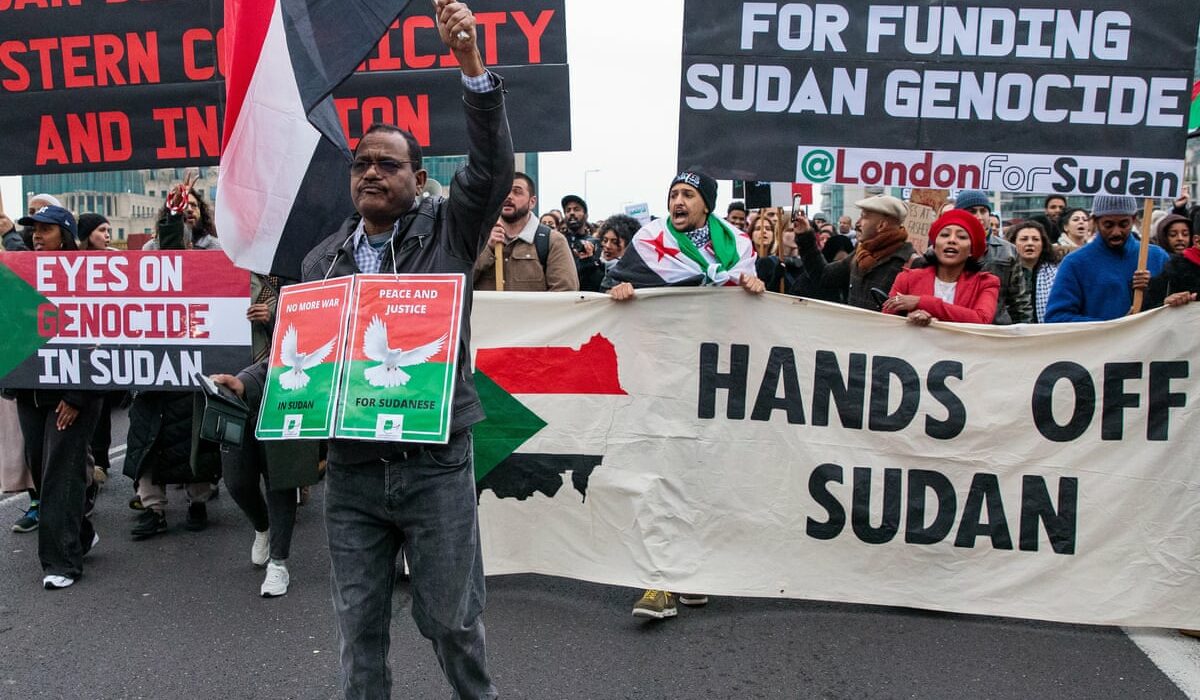Introduction
In the modern geopolitical landscape, warfare is no longer confined to tanks, bullets, and bombs. Instead, it increasingly revolves around narratives, influence, and the systematic dismantling of a nation’s cohesion through non-military tools. This is the essence of Fifth-Generation Warfare (5GW) — a sophisticated form of conflict waged through economic strangulation, information manipulation, psychological disruption, and proxy exploitation.
Nowhere is this form of war more evident than in Sudan, a country that has, for over four decades, been subjected to international sanctions, narrative isolation, economic siege, and internal fragmentation. What may seem on the surface like the result of internal mismanagement or civil strife is in fact the outcome of a multi-layered 5GW campaign designed to keep Sudan fragile, divided, and dependent.
What Is Fifth-Generation Warfare?
Fifth-Generation Warfare is defined by its non-kinetic, ambiguous, and multi-domain tactics, with little to no visible battlefield. It includes:
- Economic warfare (e.g., sanctions, resource manipulation)
- Cyber and information operations (e.g., controlling narratives, spreading disinformation)
- Cultural and ideological subversion
- Support for proxy actors and militias
- Diplomatic isolation and lawfare
The goal is not immediate conquest but long-term erosion of a nation’s sovereignty, identity, and self-sufficiency.
Sudan as a Case Study in 5GW
From 1983 to the present, Sudan has been subjected to one of the longest and most comprehensive regimes of international pressure, primarily spearheaded by the United States and supported by Western allies under the pretext of terrorism, human rights violations, and civil conflict. However, a deeper look reveals a sustained campaign to strategically weaken Sudan’s infrastructure, divide its population, and prevent regional self-determination.
The Role of U.S. Sanctions in the Fifth-Generation War Against Sudan
1. 1983–1993: Seeding the Ground
- Sudan’s civil war in the south and its pivot to Islamic governance under Nimeiri and later al-Bashir raised U.S. concerns.
- The early signs of coercion appeared in the form of withheld financial and diplomatic support, long before formal sanctions.
2. 1993–1997: Labeling and Isolation
- The U.S. designated Sudan as a state sponsor of terrorism, based on its ties with Islamic movements and figures like Osama bin Laden.
- This label triggered financial embargoes and international banking isolation, which crippled Sudan’s access to global markets.
3. 1997–2006: Economic Strangulation
- In 1997, President Bill Clinton issued Executive Order 13067, imposing comprehensive economic sanctions.
- These included:
- A full trade embargo
- Freezing Sudanese assets
- Prohibiting U.S. businesses from operating in or with Sudan
- Result: collapse of industries, halt in infrastructure development, and dependence on informal economies and black markets.
4. 2006–2011: Exploiting Darfur and Fracturing the State
- New targeted sanctions under the pretext of war crimes in Darfur further damaged Sudan’s economy.
- Meanwhile, international pressure facilitated South Sudan’s secession, splitting the country and depriving it of 75% of its oil wealth.
- Sudan was promised debt relief and normalization, but none materialized.
5. 2011–2020: Post-Secession Entrapment
- Even after South Sudan’s independence, Sudan remained blacklisted and unable to rejoin global financial systems.
- U.S. conditionalities, including normalization with Israel and terrorism compensations, imposed lawfare mechanisms — weaponizing international law as a tool of control.
- The internal cost was devastating: rising inflation, currency collapse, brain drain, and the erosion of social services.
6. Post-2021: Military Coup and Punitive Abandonment
- The 2021 military takeover was met with a total freeze on aid and support, leading to further deterioration.
- Amidst political vacuum, proxy influence expanded, notably from the UAE, Russia, and other foreign actors, turning Sudan into a battlefield for external interests — a classic 5GW scenario.
Weaponized Outcomes: How 5GW Shattered Sudan
🔹 Economic Collapse as a Tool of Control
Sudan’s inability to build a self-sustaining economy is not merely a consequence of bad governance — it is a calculated outcome of decades of denial of international access, technological embargoes, and financial suffocation.
🔹 National Disintegration via Ethnic and Regional Fragmentation
By empowering certain factions while isolating others, 5GW actors have deepened identity divides in Sudan. Whether in Darfur, South Kordofan, or the East, localized grievances have been manipulated to dilute national unity.
🔹 Proxy Empowerment and the Rise of Warlordism
As the state weakened, militias filled the vacuum. The RSF (Rapid Support Forces), for instance, emerged from a policy of divide-and-rule, and was later empowered and armed by foreign actors — not just for internal repression but as a regional mercenary force.
🔹 Control of Narrative and Moral Delegitimization
Sudan has long been portrayed in international media as a “pariah” state. This narrative dominance — another 5GW tactic — justified continued intervention, disempowered Sudanese diplomacy, and obscured the foreign hand in the nation’s suffering.
Sudan Today: A Strategic Collapse
Sudan’s current state — civil war, economic devastation, humanitarian catastrophe — is not an accidental outcome of misrule alone. It is the culmination of external strategic engineering via 5GW, where the tools of war are not guns, but:
- Sanctions masquerading as diplomacy
- Media narratives masking geopolitics
- Proxy actors replacing sovereignty
- Aid conditionality as economic blackmail
Conclusion: Beyond the Battlefield
Sudan’s experience should serve as a wake-up call for the Global South. In an age of Fifth-Generation Warfare, sovereignty is eroded not by invasion, but by invisible siege, ideological infiltration, and systematic destabilization.
The rebuilding of Sudan must begin with exposing the architecture of its sabotage, resisting the continuation of externally dictated policies, and reclaiming its agency through knowledge, unity, and self-reliance.
✍️ The Right Narrative will continue to investigate and expose the strategic architecture behind Sudan’s collapse, and amplify the voices demanding accountability — not just from warlords, but from the powers that enabled them.


